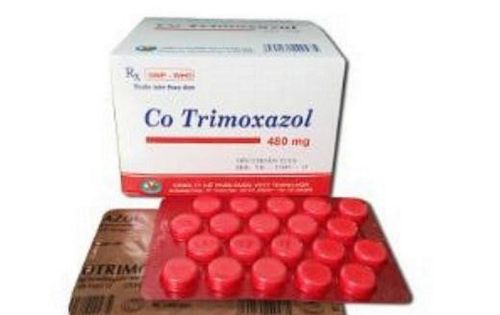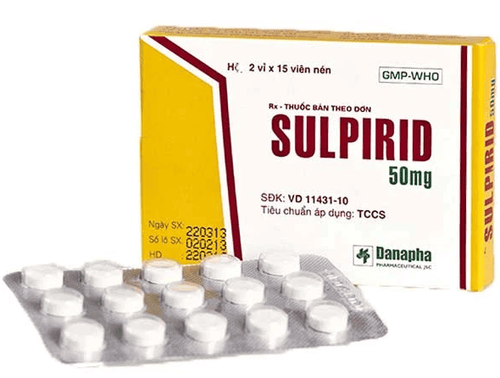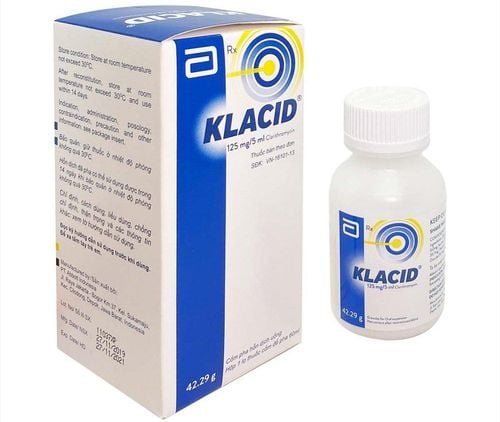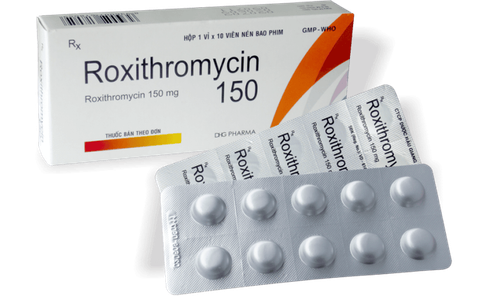Cotrimoxazole 480mg is commonly prescribed for bacterial infections such as pneumonia, bronchitis, urinary tract infections, and diarrhea, etc. It is an antibiotic combination that works by stopping bacterial growth. It does not treat viral infections.
1. What is Cotrimoxazole 480mg?
The active ingredients in Cotrimoxazole are Sulfamethoxazole 400mg and Trimethoprim 80mg, along with excipients like cornstarch, povidone K30, croscarmellose sodium, sodium starch glycolate, and magnesium stearate.
Sulfamethoxazole is a sulfonamide antibiotic that blocks bacterial folic acid synthesis by competitive inhibition. Trimethoprim, a pyrimidine derivative, specifically inhibits the bacterial enzyme dihydrofolate reductase. The combination of these two antibiotics inhibits two consecutive steps in folic acid metabolism, effectively stopping the production of purines, thymidine, and DNA in bacteria, leading to bacterial death. This synergistic mechanism also helps prevent bacterial resistance, making the medication effective even when bacteria are resistant to its individual components.
Bacteria relatively sensitive to Cotrimoxazole:
- E. coli;
- Klebsiella spp.;
- Enterobacter spp.;
- Morganella morganii;
- Proteus mirabilis;
- Indole-positive Proteus, including P. vulgaris
- H. influenzae
- S. pneumoniae
- Shigella flexneri and Shigella sonnei
- Pneumocystis jiroveci (Pneumocystis carinii)
- Some effects may occur on Plasmodium falciparum and Toxoplasma gondii.
Microorganism resistant to Cotrimoxazole:
- Enterococcus;
- Pseudomonas;
- Campylobacter;
- Anaerobic bacteria;
- Meningococcus;
- Gonococcus;
- Mycoplasma.

2. What does Cotrimoxazole treat?
Cotrimoxazole is used to treat:
- Acute otitis media
- Chronic urinary tract infections
- Current urinary tract infections
- Prostatitis
- Respiratory tract infections
- Gastrointestinal infections
- Brucellosis
- Cholera
- Plague
- Pneumonia caused by Pneumocystis jiroveci
- Toxoplasmosis
3. Dosage of Cotrimoxazole 480mg
Cotrimoxazole is taken orally, with food or drink to minimize stomach upset. The dose of cotrimoxazole is calculated based on the amount of trimethoprim in the fixed combination tablet containing sulfamethoxazole and trimethoprim mg as follows:
- Acute otitis media in children ≥2-month old: 8 mg trimethoprim/kg/day in 2 divided doses, 12 hours apart, for 10 days.
- Chronic/recurrent urinary tract infections or prostatitis (adults): Adults take 160 mg trimethoprim every 12 hours, use cotrimoxazole for 10-14 days for chronic or recurrent urinary tract infections. For prostatitis, use cotrimoxazole for 3-6 months
- Preventing recurrent UTIs: Adults use 40–80 mg trimethoprim/day or thrice weekly for 3–6 months. Children use 8 mg trimethoprim/kg/day in 2 divided doses, 12 hours apart.
- Respiratory infections (adults): 160 mg trimethoprim every 12 hours, use cotrimoxazol for 14 days.
- Shigella infections: Adults use 160 mg trimethoprim every 12 hours for 5 days. Children use 8 mg trimethoprim/kg/day in 2 divided doses, 12 hours apart for 5 days.
- Brucellosis in children: 10 mg trimethoprim/kg/day (max 480 mg/day) in 2 divided doses, uses cotrimoxazol for 4–6 weeks.
- Cholera: Adults use 160 mg trimethoprim twice daily for 3 days. Children use 4–5 mg trimethoprim/kg twice daily for 3 days.
- Plague exposure prevention: Adults use 320–640 mg trimethoprim/day in 2 divided doses, 12 hours apart for 7 days. Children older than 2-months old use 8 mg trimethoprim/kg/day in 2 divided doses, use cotrimoxazol for 7 days.
- Pneumonia due to Pneumocystis jiroveci: Children older than 2 months old and adult use 15–20 mg trimethoprim/kg/day in 3–4 divided doses for 14–21 days.
- HIV prophylaxis (adults and adolescents): 160 mg or 80 mg trimethoprim once daily.
- HIV prophylaxis (children): 150 mg/m² trimethoprim/day in 2 divided doses for 3 consecutive days each week.
- Toxoplasmosis prophylaxis: Adults/adolescents use 160 mg or 80 mg trimethoprim once daily. Children use 150 mg/m² trimethoprim/day in 2 divided doses.
For patients with kidney impairment:
- Creatinine clearance >30 mL/min: Standard dose.
- Creatinine clearance 15–30 mL/min: Half the standard dose
- Creatinine clearance <15 mL/min: Do not use.
4. Contraindications of Cotrimoxazole
- Allergy to sulfamethoxazole, trimethoprim, or any excipients in Cotrimoxazole;
- Severe liver damage.
- Severe kidney failure with creatinine clearance below 15 mL/min that cannot be managed.
- Megaloblastic anemia caused by folate deficiency.
- Pregnant or breastfeeding women.
- Children under 2 months of age.

5. Side Effects of Cotrimoxazole
- Common side effects: Nausea, vomiting, loss of appetite, and diarrhea.
- Hypersensitivity reactions: Fever and skin reactions such as rash, itching, photosensitivity, exfoliative dermatitis, erythema, or more severe conditions like toxic epidermal necrolysis and Stevens-Johnson syndrome, which can be life-threatening.
Other side effects:
- Worsening of pre-existing conditions (e.g., systemic lupus erythematosus). Kidney toxicity, including interstitial nephritis, tubular necrosis, back pain, blood in urine, reduced urine output, or difficulty urinating.
- Blood disorders such as agranulocytosis, aplastic anemia, thrombocytopenia, leukopenia, reduced prothrombin levels, or increased eosinophil count.
- Liver enzyme abnormalities, cholestatic jaundice, methemoglobinemia (causing cyanosis), and acute hemolytic anemia.
6. Drug Interactions with Cotrimoxazole
- Warfarin: Cotrimoxazole increases blood clotting time by reducing the clearance of warfarin metabolites.
- Phenytoin: Cotrimoxazole inhibits the metabolism of phenytoin.
- Methotrexate: Sulfonamides displace methotrexate from plasma proteins, raising free methotrexate levels.
- Cyclosporin: Nephrotoxicity may occur but is reversible in kidney transplant patients using cotrimoxazole with cyclosporin.
- Digoxin: Cotrimoxazole raises serum digoxin levels, especially in older adults.
Indomethacin: Cotrimoxazole increases plasma sulfamethoxazole levels. - Pyrimethamine: Megaloblastic anemia can occur with doses of pyrimethamine over 25 mg/week when combined with cotrimoxazole.
- Antidepressants: Cotrimoxazole reduces the effectiveness of tricyclic antidepressants.
- Amantadine: Combining cotrimoxazole with amantadine may cause toxic delirium.
Cotrimoxazole is commonly prescribed for infections like pneumonia, bronchitis, urinary tract infections, and diarrhea. To ensure effectiveness and minimize side effects, follow your doctor’s or pharmacist’s instructions.
To arrange an appointment, please call HOTLINE or make your reservation directly HERE. You may also download the MyVinmec app to schedule appointments faster and manage your reservations more conveniently.








